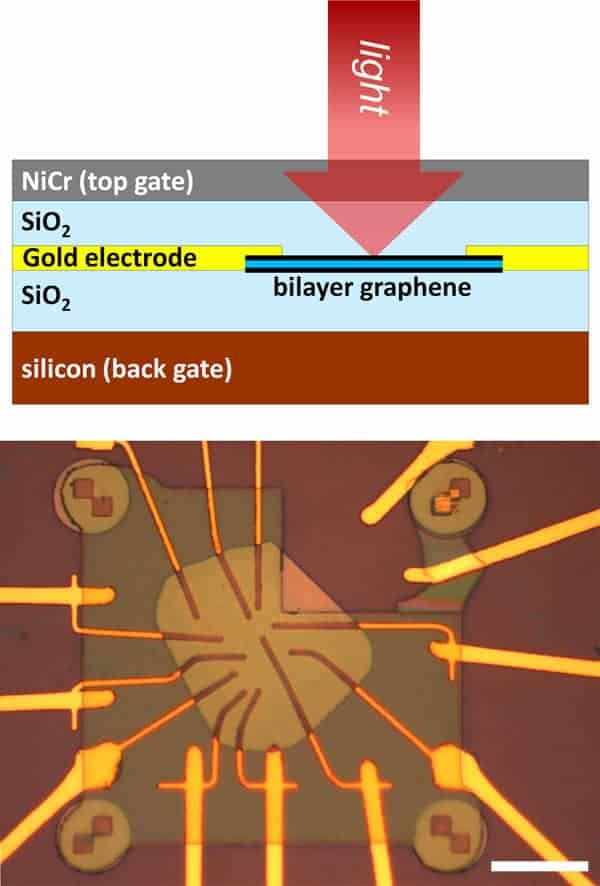
Researchers in the US have unveiled a new way of using graphene to detect light. The team’s graphene-based bolometer works in the infrared and although the first version of the device must be chilled to a very low temperature, newer models should work at room temperature, says the team. These devices could find applications in a wide range of areas, including security screening at airports, medical imaging and terahertz radio astronomy.
Previous schemes for using graphene – a honeycomb of carbon just one atom thick – to detect light have mostly focused on photoelectric or thermoelectric effects whereby light or temperature differences, respectively, are converted into electrical signals. By contrast, a bolometer is an instrument that absorbs light and turns it into heat. This heat affects the electrical resistance of the absorbing material, and it is this change that is measured.
Graphene could play an important role in the bolometers of the future because it can absorb light over a very wide range of wavelengths. These range from the ultraviolet to the infrared parts of the electromagnetic spectrum, and especially in the infrared. What is more, physicists know that electrons in graphene couple weakly to the lattice vibrations (phonons) in the material. This means that when these electrons absorb light, they heat up, but the atoms stay cool. “This allows the electrons to become much hotter than they otherwise would if they simply gave up their heat to the phonons,” explains Michael Fuhrer of the University of Maryland, who led the development of the new device.
Metal to semiconductor
In its normal state, however, graphene’s resistance is almost independent of temperature – which is not very useful for making a bolometer. Fuhrer and colleagues overcame this problem by using bilayer graphene in their device. They created two electrical gates: one above and the other below the bilayer. These gates are used to apply an electric field perpendicular to the layers. Doing this opens up a small band gap in the graphene, thus turning it from a metal to a semiconductor. The graphene is also connected to two gold electrodes, which are used to measure its resistance (see figure).
“The semiconducting bilayer graphene has a resistance that strongly depends on temperature and so makes for an excellent bolometer,” Fuhrer explains.
The current version of the bolometer only works at temperatures of about 6 K, so initially it could be used in applications where high sensitivity is required – such as in submillimetre-wave (terahertz) radio astronomy, for example. However, the researchers are busy developing a new version of the graphene bolometer that they believe will work at room temperature.
High-frequency readout
The team also plans to improve its low-temperature device. “The problem we have is that the bilayer graphene only absorbs a few per cent of incoming light and the semiconducting material is highly resistive, which makes high-frequency read-out difficult,” explains Fuhrer. “We are trying to enhance the absorption of light by taking advantage of plasmonic resonance in the graphene and are also looking at ways to lower the resistance of the device, such as by using superconducting electrodes.”
The researchers describe their work in Nature Nanotechnology.



